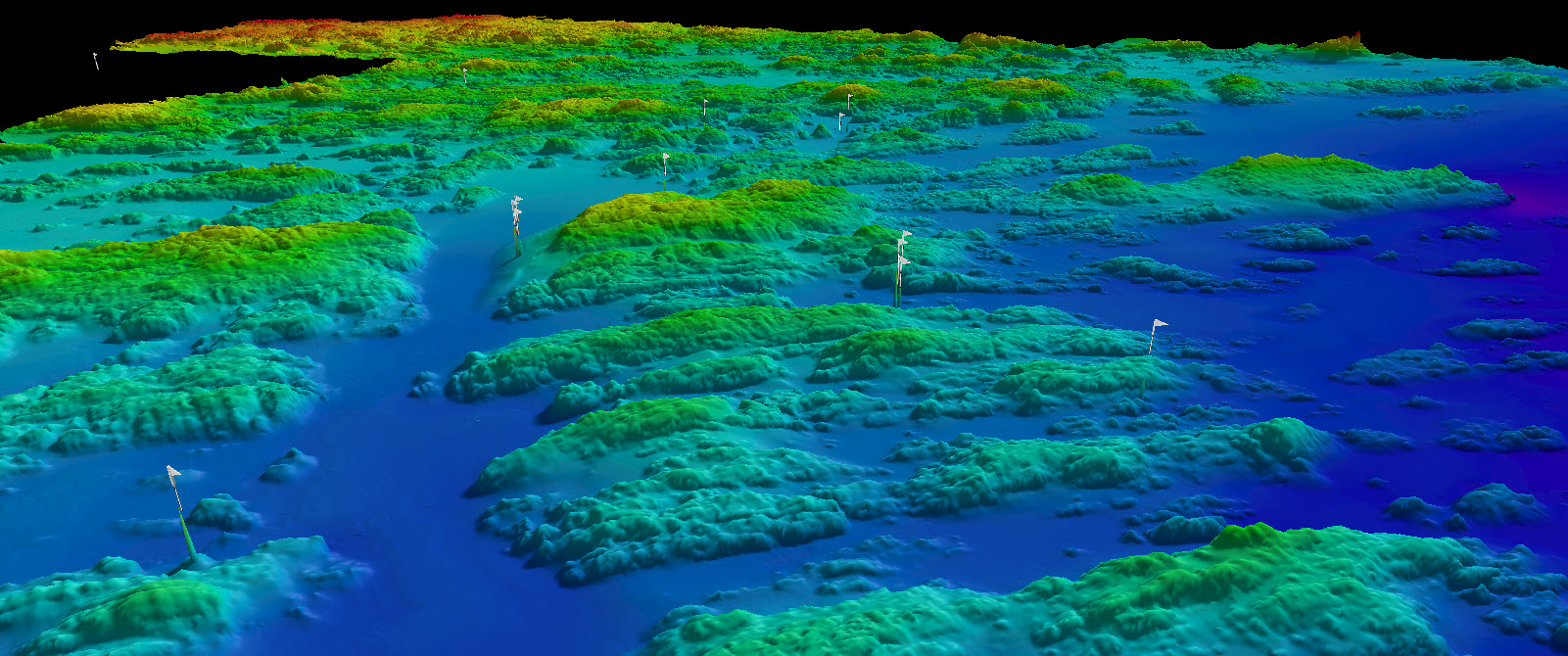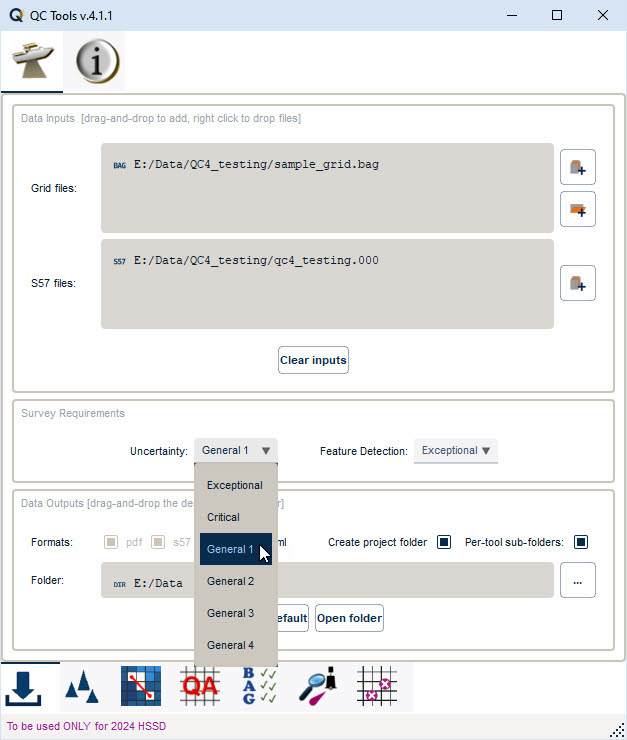CCOM Spotlight: QC Tools 4 Release
Just released! QC Tools 4 has direct support for NOAA’s new hydrographic survey specifications and enables its automated compliance. QC Tools functions that provide QA/QC to bathymetric grids and feature files now have settings configured to the new NOAA Quality Metrics introduced in the HSSD 2024.
The NOAA Office of Coast Survey just released the new 2024 Hydrographic Surveys Specifications and Deliverables (HSSD), a document well known and commonly referenced throughout the industry, and the 2024 version marks the largest overhaul of the HSSD in more than 20 years.
Right on time, the QC Tools development team (composed of members from CCOM/JHC and NOAA) has released QC Tools 4 – a major version release of the popular software, with direct support for the new HSSD. QC Tools 4 enables the automated compliance of hydrographic data to the new specifications. A significant redesign of the software was required in this new version, to align with the new NOAA Quality Metrics introduced in the HSSD 2024, which represent NOAA’s implementation of the International Hydrographic Organization (IHO) standards for hydrographic survey and product specifications.
Embracing automation was a key priority in the vision for the new specifications. With this in mind, QC Tools 4 was developed alongside the new HSSD, and beta versions of QC Tools 4 were provided to NOAA field units testing the draft specifications. The co-development of specifications and software provided critical feedback loops between the writing teams and software developers, to ensure the specifications best facilitated automation.
Working with bathymetric grids (including VR) and S-57 feature files, QC Tools scans over large data files to flag data quality issues that are often very difficult, or even impossible, for a human to identify. These issues are related to anomalous data, data gaps, or incorrect attribution. The software also tests to ensure requirements have been met for uncertainty, density, and resolution. The QC Tools software has become a foundational component to facilitate automation in the NOAA hydrographic workflow, and is widely used outside NOAA in the greater hydrographic community.
 |
|
-
Flier Finder: uses 6 unique algorithms to help identify potentially anomalous nodes (a.k.a. fliers) in bathymetric grids.
-
Holiday Finder: scans bathymetric grids to find unpopulated nodes, or data gaps, and helps determine which of these may be classified as a holiday based on HSSD 2024 feature detection requirements (Sections 6.4, 6.5).
-
Grid QA: evaluates the statistical layers of a grid to ensure compliance with regard to uncertainty, density, and resolution of your grids, per the HSSD 2024 standards (Sections 5.8, 6.4, 6.9).
-
BAG Checks: evaluates BAGs to ensure compliance with the NOAA National Bathymetric Source (NBS) and with BAG specifications.
-
Feature Scan: scans features to ensure proper attribution per the HSSD 2024 Feature Encoding Guide (Sections 17, 18, 19).
-
VALSOU Checks: ensures features (wrecks, rocks and obstructions) are properly accounted for in the gridded bathymetry per HSSD 2024 (Section 7.0).
- Uncertainty Calculator: allows for interactive plotting and visualization of the new NOAA Quality Metrics presented in the HSSD 2024 (Sections 5, 6), and comparison to IHO Orders and Category Zones of Confidence.
 |
|
QC Tools is a collaborative effort between NOAA and the Center for Coastal and Ocean Mapping and Joint Hydrographic Center (CCOM/JHC). The team is composed of Dr. Giuseppe Masetti (lead developer; CCOM/JHC), Tyanne Faulkes, and Matt Wilson (developers; both of the NOAA Office of Coast Survey). QC Tools has been ensuring the automated compliance of NOAA specifications, and more broadly, helping to identify data quality issues common to any hydrographic office, since 2015.



